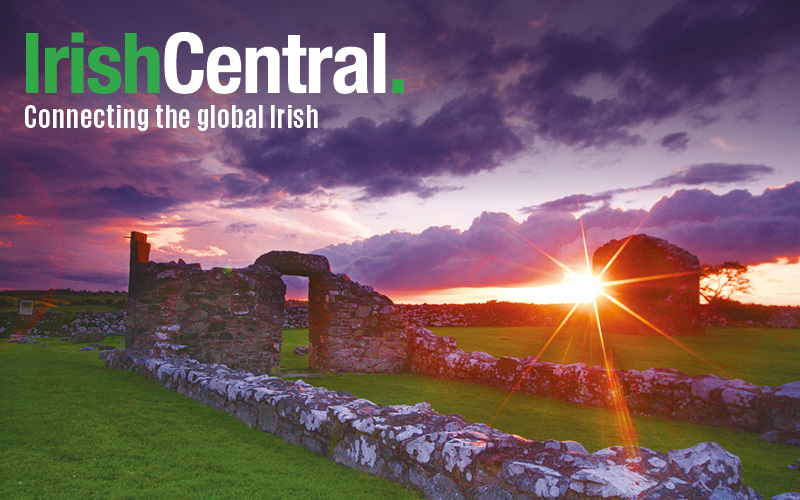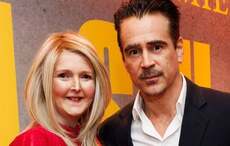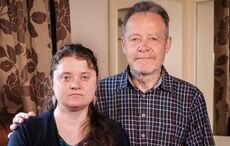|
Owen Barrington Photo: Levi Nilsson of Apogee Studios in Anchorage, AK |
Feis America: How old are you now, and when did you start Irish dance?
Barrington: I just turned 27 years old and I started my Irish dancing adventure at the relatively late age of 12. I didn’t compete at my first feis though until I was 15 because I was learning to dance in my hometown of Anchorage, Alaska and we did not have a certified instructor for several years.
Feis America: Do you think starting later, as an older kid, gave you an advantage or disadvantage in competitive Irish dance?
Barrington: Generally, I feel that if I had started earlier in Irish dance it probably would have been more of an advantage. But for my circumstances at the time, I was a bit more mature and focused and it was only about 3 years before I started competing, so if I had been dancing a lot longer before getting to compete I might have burned out early. Now I look back and see that things happened the way they were meant to in order for me to have accomplished what I have in dance. My message to the rest of the male Irish dance community is it’s generally better to started earlier, but really it all depends on how focus your are and how much you want to commit to dancing that will determine how far you will go.
Feis America: What Irish dance school or schools have you trained with?
Barrington: When I first started dancing, my dance school was called the Irish Dance Academy of Alaska (formally the Keegan-Dance School of Irish Dance). At the time it was non-competitive, but in the year 2000 we hired Tony Comerford to fly up regularly and teach so we could finally attend feisanna. I danced for the Tony Comerford School from then until the end of my competitive career in 2008.
Video interview with Owen in 2007- fabulous footwork:
Feis America: When you started Irish dancing, did you know you'd want to be a professional Irish dancer someday?
Barrington: When I started Irish dancing it was the shows like “Riverdance” and “Lord of the Dance” that kept me interested in Irish dance. I definitely had the goal of being able to dance at the level of the dancers in the videos but I never really thought about someday joining one of them. Once I started competing, that became my passion because it gave me a rush that performing never did. I still love performing for live audiences but there’s nothing in the world like competitions.
Feis America: Have you thought about taking the exams to be a TCRG (aka certified teacher with An Coimisiun le Rince Gaelacha)?
Barrington: I actually just recently took and passed my TCRG examination. Gaining my TCRG has always been a goal of mine because I love teaching and passing along this great tradition of dance that I find so character building and life enriching. Eventually I would like to try for my ADCRG (aka certified adjudicator with An Comisiun le Rince Gaelacha) for the exact same reasons.
|
2005 Riverdance photo Nicholas Yenson, Owen, Scott Doherty, and Kevin Horton |
Barrington: The first big professional show I ever danced in was Riverdance, and it will always be a wonderful experience that I will never forget. I’m still fortunate to be on their “Flying Squad” so I still get to dance with them from time-to-time. Some other show’s I have been with are Emerald Beat, Battle of the Dance, Eileen Ivers, the Chieftains, Celtic Fire, and I am currently the lead dancer in Michael Londra’s Beyond Celtic, which was aired recently as a PBS special.
Feis America: What are you currently doing with Irish dance?
Barrington: With dance right now, I am just enjoying touring around the world and doing what I love to do. I’ve finished my college degree and got my TCRG, so I plan to tour for a few more years before finding a place to settle down and start up my future dance school.
Feis America: Where have you traveled with your Irish dance?
Barrington: Irish dancing has taken me to many places. I’ve been to every state in the U.S., all over Canada, Ireland, England, Scotland, and all the way to China. It really is a blessing I’ve been able to see all these amazing places, and if it weren’t for Irish dancing I most likely never would have been to any of them.
Feis America: What was your favorite trip either professionally or competitively with Irish dance?
Barrington: It is really hard to choose which destination has been my favorite. I must say I always have a great time when I go to Scotland. I have to say China was the most interesting of all my journeys because the culture was so different from what I was used to.
Feis America: Do you play any musical instruments?
Barrington: I do play a few instruments and have dabbled in several others. The ones I am most proficient on would be the Highland bagpipes, the Scottish smallpipes and Reelpipes, Irish whistles, bodhran and fiddle. I started playing most of these around the same time I started dancing and I found that they helped me immensely with my dancing because the art form is so heavily influenced by Irish music.
Feis America: Have you met any of the people you looked up to when you were younger now that you are dancing professionally?
Barrington: I always looked up to Michael Flatley, Colin Dunne and John Carey when I was in my younger years. I have met Colin and John but I have yet to meet Michael in person, hopefully someday I will.
|
Owen Barrington and Michael Londra Promotional photo: Michael Londra's Beyond Celtic |
Feis America: What are your future goals or plans that include Irish dance?
Barrington: My ultimate goal is to open my own dance school, but I have some smaller goals along the way. I’d like to see how far I can take my show dancing career and enjoy that while my legs are still fresh and when I’m old enough I’d like to take my ADCRG. Irish dancing in it’s nature is unpredictable, so many things have happened to me that I did not and could not foresee, but that’s kind of the appeal of it all. In the future I will do what I’ve always done; work hard, take opportunities when they present themselves and just enjoy the road it takes me down.
Feis America: Any advice for Irish dancing boys just starting out?
Barrington: The best advice I have for new guys who have just joined Irish dance is to work hard (aka practice, practice, practice), try your best whether it be class, competition or a show and lastly, always listen to your teacher.
Feis America: What brand of hard shoes and soft shoes do you wear?
Barrington: I wear what I like to call “Franken-shoes” because they’re different parts put together like “Frankenstein”. My hard shoes are made by Antonio Pacelli with the Liberty tips and the tan soles. I find they fit my feet well, are of good quality and look good on the stage. After I order them from Pacelli, I then send them off to Rutherford and have the Rutherford Hi-Tech Heels put on and also their Champion Shamrock lacing system. Once that is all done, I rip out the insole and replace it with some Dr. Scholl’s gel insoles and I’m ready to break them in. This is the perfect combination for my hard shoes. As for my soft shoes, I usually go to a ballet dance store and pick out the Sansha jazz shoe with elastic around the arch and then send those to Rutherford for the same heel and lacing replacement.
Feis America: Did anyone ever give you a hard time for being an Irish dancer? If so, how did you get through it?
Barrington: I, believe it or not, did not get hassled a lot for my dancing when I was younger. There were maybe one or two people that may have said a few side remarks in the past, but overall most of my friends thought it was pretty cool. Even if some of them didn’t approve of my dancing I probably would have continued with it anyway because I liked doing it so much.
Feis America: What is your favorite music to practice your Irish dance to?
Barrington: At the moment I really like Sean O’Brien’s new album and also Anton and Sully’s CD.
Feis America: Other than Irish dance music, what artists or groups do you like to listen to in your spare time? My iPod is literally composed of every genre of music you can think of so it really depends on my mood that determines what I’m listening to at that moment. I go by the basic principle of ‘if it sounds good, I’ll listen to it.’
Feis America: Do you have any pets?
Barrington: I myself don’t have any pets, but my family has had cats and dogs. When I was younger I had a pet Iguana. I thought he was pretty cool but my sister wasn’t really a fan.
Feis America: In all the comments you got from judges, over your competitive years, was there one or two common things that would come back-- something you needed to work on or a weakness you had to overcome to get better?
Barrington: Throughout my dance career I struggled with timing issues, but through hard work I eventually overcame that. The same was with turn out, again with lots of practice and stretching I was able to correct it.
Feis America: Do you have anything interesting in the way of cross-training that you do to stay fit or flexible for Irish dance? Any special exercises or stretches you do to prepare for a show?
Barrington: The best cross-training I’ve found for Irish dancing is Plyometrics, which is basically really fast, explosive, repetitive movements to build fast fiber twitch muscle strength. Jumping rope also help a little bit. When I was competing I would try to eat really well and drink only water, no soda or sweets. But in all honesty, the best thing to help your Irish dancing is to just dance for hours on end, there’s nothing really that replaces that. Before I do a show I just make sure I warm up until I have a little sweat dripping and then do a good 30 min stretch, nothing too special or complicated, just enough to make sure I don’t injure myself during a performance.
|
Owen Barrington World Champion Photo: Edward Barrington |
Barrington: I have lots of wonderful memories involving my achievements in Irish dancing, but I’d have to say winning the World Irish Dancing Championships in 2008 was the most memorable. Including the Worlds, my top placements in my career were All-Ireland Irish Dancing Champion, 2-time North American National Irish Dancing Champion and 2-time Western U.S. Regional Irish Dancing Champion.
Feis America: What kinds of jobs and opportunities are there for someone who wants to be a professional Irish dancer? How did you get started?
Barrington: Nowadays, there are lots of different touring, and non-touring, Irish dance shows out there. Dancers now have both the opportunity to perform their art form and make a career out of it as well as teach the art form, which used to be the only option once you finished with competition. If a dancer is of Open Championship level and is getting a bit tired of the competition scene I would highly recommend trying to join a dance show, even if it’s just for a little while. The first set in joining is to just contact one of these shows (usually they’ll have a website) and say that you’re interested in joining. Be prepared to submit videos, pictures and possibly a resume, for they will tell you what the required materials will be in order to apply for the show.
Feis America: Thanks so very much, Owen, for answering my questions! I wish you great success in all of your goals and future endeavors. We hope to see you on stage for ourselves sometime soon.




Comments